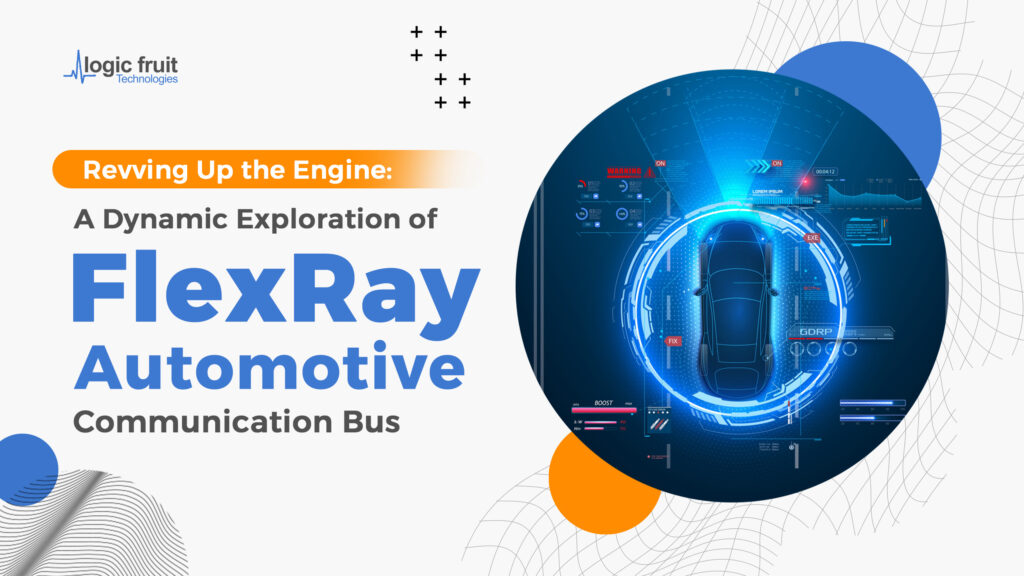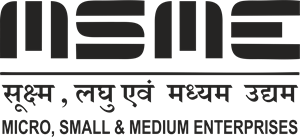FlexRay Automotive Communication Bus is regarded as a vital neural network in contemporary automobile technology. Envision an advanced communication system that functions like the cerebral connections in the human brain, allowing data to be sent between different parts of the vehicle with ease.
With its fast, predictable, and dependable data interchange platform which is necessary for today’s complex automotive systems, FlexRay transforms communication.
In this blog, We explore the FlexRay Basics, Structure, features, applications, topology & layout, FlexRay protocol communication, Data security, and error handling, benefits of FlexRay, constraints of FlexRay, and so on…
FlexRay Basics

FlexRay is built in many ways to minimize expenses while maintaining high performance in a challenging environment. Unshielded twisted pair cabling is used by FlexRay to link nodes together.
Single- and dual-channel topologies, comprising one or two wire pairs, are supported by FlexRay. Without the need for pricey shielding, differential signaling on each pair of wires lessens the impact of outside noise on the network. Transceivers and microprocessors are usually powered by power and ground wires that are accessible on the majority of FlexRay nodes.
Double-channel setups provide more bandwidth and/or improved fault tolerance. Future FlexRay networks will employ both channels as applications get more complicated and have more safety needs, although most first-generation FlexRay networks only use one channel to save wire expenses.
It is necessary to terminate FlexRay buses at both ends. This can be done by connecting a resistor between the two signal wires. In a multi-drop bus, only the end nodes require termination. A FlexRay network can be destroyed by excessive or insufficient termination.
Although there are differences in specific network implementations, most FlexRay networks have an 80–110 ohm cabling impedance, and the end nodes are terminated to match this impedance.
When connecting a FlexRay node to a test setup, termination is one of the most common reasons for irritation. On-board termination resistors may be present in contemporary PC-based FlexRay interfaces to streamline wiring.
Structure of FlexRay Network
FlexRay connects its nodes through unshielded twisted pair cables. These require termination at the end nodes because of their 80–110 ohm cabling resistance. Resistors are attached between the pair of signal wires to do this, just like CANs.

The effects of outside noise on the network are lessened without the need for costly shielding thanks to differential signaling on each pair of connections. One or two pairs of wires make up the single and dual-channel setups that it supports. Better fault tolerance and more bandwidth are provided by dual-channel setups.
Features of FlexRay
- Reliable.
- Quicker.
- Duplicate.
- High throughput of up to 10 Mbps.
- Variable arrangement.
- Adaptable topology choices
- Robust to errors.
- Time and event-triggered
- Two-channel setup
- Can include a maximum of ‘n’ nodes.
- Manages a wide range of frame types.
- Tolerant of errors.
- Access without a crash.
- Message latencies are assured.
- Fixed latency times in communication.
- All ECUs are in global synchronized time.
- Parts that are static and dynamic.
- Twenty times the bandwidth of CAN.
- Uses Time Division Multiple Access (TDMA) to manage several nodes.
Applications of FlexRay
- Electronic steering of power. (Wheel steering).
- Cutting-edge solutions for driver assistance.
- Power system.
- Module for body control.
- Mechanism for managing batteries.
- System of antilock brakes.
- Vehicle stability control (VSC).
- Vehicle stability assist (VSA).
FlexRay Topology and Layout
The topology, or network layout, of FlexRay, CAN, and LIN sets them apart from more conventional networks like Ethernet. For more intricate networks, FlexRay offers both active star connections and straightforward multi-drop passive connections.
Choosing the appropriate topology aids designers in maximizing cost, performance, and reliability for a particular design, contingent upon the configuration of a vehicle and the degree of FlexRay utilization.
Multi-drop Bus
FlexRay is frequently utilized in a straightforward multi-drop bus topology with a single network cable run connecting several ECUs. First-generation FlexRay cars frequently employ this architecture since it is well-known to OEMs and is utilized by CAN and LIN.
The distance at which each ECU can “branch” from the bus’s central “trunk” is limited. Termination resistors are inserted at the network’s ends to prevent signal reflection issues.
FlexRay operates at higher frequencies than CAN, up to 10 Mbit/s, so network designers must be careful when terminating and laying out networks to prevent issues with signal integrity. Additionally, the multi-drop structure works well with car harnesses that frequently have a similar layout, making installation easier and requiring less wiring overall.

Star Network
“Star” configurations—which are made up of separate links connecting to a central active node—are supported by the FlexRay standard. In terms of functionality, this node is comparable to a hub seen in PC ethernet networks.
FlexRay networks can be operated over longer distances with the active star design, or they can be divided into more dependable segments in the event that a segment fails.
The remaining legs of the star still operate even if one of its branches is severed or shortened. Using numerous legs decreases the amount of exposed wire for a segment and can help boost noise immunity because long lines of wires tend to carry more environmental noise, such as electromagnetic emissions from large electric motors.

Hybrid Network
A hybrid topology can be created by combining the bus and star topologies. Future FlexRay networks are probably going to be hybrid networks, utilizing the cost-effectiveness and user-friendliness of the bus topology with the performance and dependability of star networks where appropriate within a vehicle.

FlexRay Protocol Communication Cycle
The foundation of FlexRay’s media-access mechanism is the FlexRay communication cycle. A cycle’s length is chosen during network construction, however, it usually ranges from 1 to 5 ms.
A cycle of communication consists of four key parts:

1. Static Segment

The area in the cycle devoted to arranging a number of time-triggered frames is known as the static segment, and it is symbolized as the blue section of the frame. The segment is divided into slots, with a reserved frame of data in each slot. The reserved ECU has the chance to send its data into each slot when it happens on time.
The ECU can’t transmit data in that slot after that period has passed; it has to wait until the next cycle. Programs are able to determine the exact age of the data since deterministic data has a definite point in time inside the cycle. When calculating control loops that rely on data that is regularly spaced, this is quite helpful.
2. Dynamic Segment

A big number of lower-speed, less-critical networks coexist with a small number of high-speed messages in most embedded networks. The dynamic segment permits sporadic transmission of data in order to support a broad range of data without slowing down the FlexRay cycle with an excessive number of static slots.
The maximum fixed quantity of data that can be inserted into the dynamic segment in a single cycle is limited by the segment’s fixed length. Mini-slots are pre-assigned to every frame of data that is suitable for transmission in the dynamic segment in order to prioritize the data.
Typically, a small slot lasts for a macro tick or microsecond. A minimum is assigned to higher-priority data nearer the start of the dynamic frame.
An ECU has a limited window of time after a tiny slot to transmit its frame. The following mini-slot starts when it loses its position in the dynamic frame due to failure to broadcast. The tiny slots are moved down in this manner until an ECU decides to broadcast data.
Future small slots will have to wait till the ECU finishes broadcasting the data. Lower-priority mini slots will have to wait until the following cycle for another chance to broadcast if the dynamic frame window closes.
3. Symbol Window
The maintenance and identification of specific cycles, such as cold-start cycles, are the principal uses of the Symbol window. The majority of high-level programs don’t communicate with the symbol window.
4. Network Idle Time
The ECUs set the predetermined, known duration of the network idle time. During this idle period, the ECUs correct for any drift that may have happened during the preceding cycle.
Data Security and Error Handling
The FlexRay network’s ability to communicate through single or dual channels enables scalable fault tolerance. The devices attached to the bus may use both channels for data transfer in applications where security is crucial.
When redundancy is not required, it is also possible to connect to just one channel or to enhance bandwidth, one can use both channels to transport non-redundant data.
FlexRay offers quick mistake detection and signaling within the physical layer, along with error containment via a separate Bus Guardian. A physical layer technique called the Bus Guardian shields a channel from interference brought on by communication that doesn’t follow the cluster’s communication schedule.
Frame Format

Detail of a FlexRay Frame
Each slot of a static or dynamic segment contains a FlexRay Frame. The frame is divided into three segments: Header, Payload, and Trailer.
Header

Bit-level breakdown of a FlexRay Frame
The Header is 5 bytes (40 bits) long and includes the following fields:
- Status Bits – 5 bits
- Frame ID – 11 bits
- Payload Length – 7 bits
- Header CRC – 11 bits
- Cycle Count – 6 bits
Event-triggered frames are prioritized using the Frame ID, which also specifies the transmission slot in which the frame should occur. The amount of words transferred within the frame is indicated by the Payload Length.
Errors during the transfer are found using the Header CRC. The value of a counter that rises incrementally each time a Communication Cycle begins is contained in the Cycle Count.
Payload

Payload of a FlexRay Frame
The payload contains the actual data transferred by the frame. The length of the FlexRay payload or data frame is up to 127 words (254 bytes), which is over 30 times greater compared to CAN.
Trailer

The trailer contains three 8-bit CRCs to detect errors.
Signals

Frame to Signal conversion
The byte representation of FlexRay data is used. Real decimal numbers with units, scaling, and restrictions must be used to represent data in the majority of applications.
Actual parameters can be communicated between ECUs by using the signal that is produced when one or more bits or bytes from a FlexRay frame are taken scaled and offset. When working with FlexRay data, most ECU applications operate with signals and let the driver or lower-level communication protocols convert the signals to raw frame data.
There are hundreds to thousands of signals in an average car. FlexRay networks maintain these definitions in the FIBEX database that specifies the network because the scale, offset, definitions, and placements of these signals can change.
With the ability to just refer to the signal name in the code, designers may now write programs for FlexRay networks more easily. When the software is updated to the ECU or test system, the compiler or driver then retrieves the latest scaling and offset data.
Clock Synchronization and cold Starting

FlexRay is the first technology that can synchronize nodes on a network without the need for an external clock signal for synchronization. It does this by using two unique kinds of frames called Sync Frames and Startup Frames.
It takes at least two distinct nodes to submit startup frames in order to initiate a FlexRay cluster. The process of launching the FlexRay bus is referred to as a “cold start,” and the nodes that transmit the startup frames are typically referred to as cold start nodes. Similar to a start trigger, which instructs every node on the network to begin operating, are the startup frames.
All nodes need to synchronize their internal oscillators to the network’s macro tick after it has been initiated. Two extra synchronization nodes can be used for this.
These could be any two network nodes that are set aside specifically to broadcast special sync frames during the first power-up. In order to synchronize their internal clocks with the FlexRay time, other nodes on the network wait for the sync frames to be broadcast and measure the interval between each broadcast. The network’s FIBEX configuration designates the sync frames.
The network idle time, shown as the white area in the diagram, is measured once the network is synchronized and online and is used to modify the clocks cycle by cycle to preserve precise synchronization.
In Cycle Control

The ability to perform in-cycle control is one of FlexRay’s advanced features. The wheel positions happen before central controller #5 issues the last update command, giving the controller time to process and quickly produce an output during the same communication cycle. This makes it possible to achieve extremely fast control rates on a FlexRay network.
Escalating Requirements in Communication
Electronic control units (ECUs) in cars need to convey data faster, more frequently, and more reliably if they are to continue to improve safety, performance, comfort, and environmental effects.
More synchronization and performance are needed for advanced control and safety systems, which integrate more sensors, actuators, and electronic control units, than what the current standard, Controller Area Network (CAN), can offer.
Modern cars use more than five different CAN buses, which increases bandwidth requirements. As a result, automotive experts are calling for a next-generation embedded network.
The FlexRay standard has evolved as the in-vehicle communications bus to tackle these new difficulties in the next generation of cars, following years of collaboration with OEMs, tool suppliers, and end users.
Complex embedded designs such as cars require time to adopt a new networking standard. FlexRay won’t replace the other two widely used in-vehicle standards, CAN and LIN, even if it will address difficulties with in-vehicle networks, both high-end and mainstream in the future.
To minimize transition issues and maximize cost, the upcoming generation of cars will have FlexRay for high-end applications, CAN for general engine connectivity, and LIN for low-cost body electronics.
Difference between FlexRay and other Communication Protocols
FlexRay differs from other communication protocols, such as CAN and LIN, in several ways. Some of the main differences include:
- Data rate: Allows for high-speed communication by offering a data rate that is higher than existing protocols.
- Redundancy and fault tolerance: Due to its fault tolerance and redundancy, FlexRay’s dual-channel communication system is extremely dependable.
- Complexity: Compared to other communication protocols, this one is more complicated, and maintaining it calls for certain knowledge and skills.
Conclusion:
Similar to the complex neural network of a car’s nervous system, FlexRay Automotive Communication Bus develops as a key component of contemporary automotive technology. Its cutting-edge design provides predictable, dependable, high-speed data transfer while accommodating the increasingly complicated automotive systems.
We acknowledge FlexRay’s revolutionary role in advancing the automotive sector toward safer, smarter, and more networked automobiles as we wrap up our investigation into it. The automobile industry is embracing a future where continuous data flow spurs innovation and propels the advancement of mobility with FlexRay leading the way.





![Advanced Driver Assistance System [ADAS] Everything You Needs to Know](https://www.logic-fruit.com/wp-content/uploads/2022/10/Advanced-driver-assistance-systems-Thumbnail.jpg)





